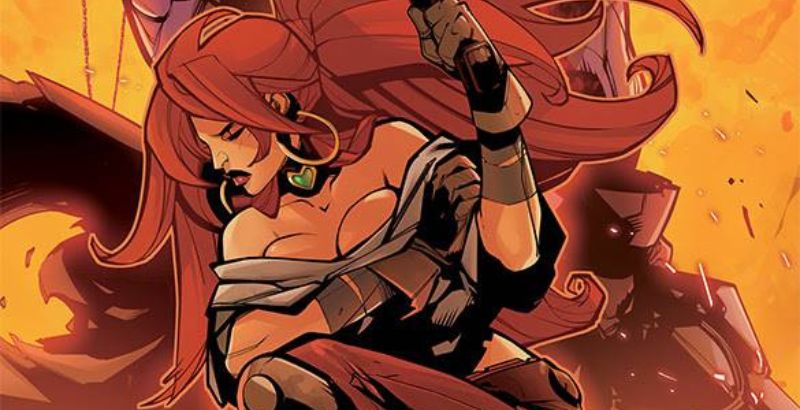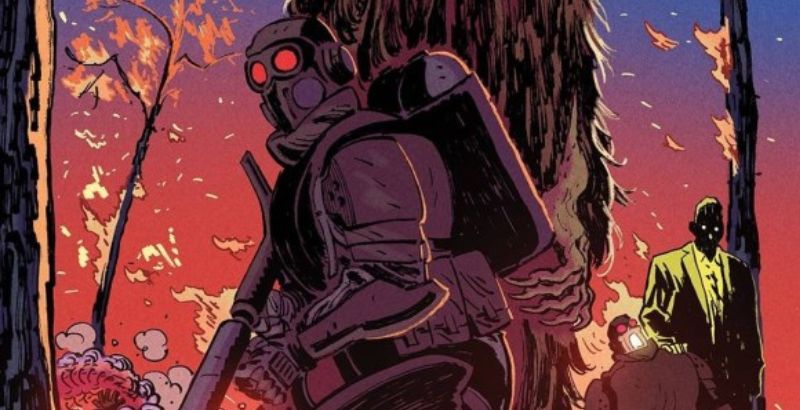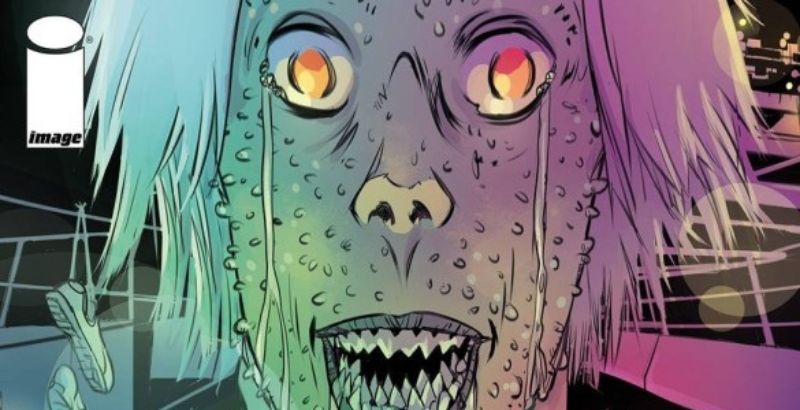
Ultramega #1 is published by Image Comics, written and drawn by James Harren, colors by Dave Stewart, and letters by Rus Wooton. As a cosmic virus turns unsuspecting individuals into hulking kaiju monsters, one man, mysteriously gifted with incredible powers, can fight them off. But one man can only handle so much blood, battle, and trauma. The situation is starting to look grim.
Violence is not an unusual sight in fictional media—heroes and villains duking it out as city blocks are reduced to rubble. It’s how this violence is depicted that greatly alters the tone media has and the impression it leaves with the consumer. While most media leans for a more sterile take on destruction, some media leans into its violence and gore. More often than not, this is done simply for shock value or to stir up controversy. However, sometimes brutal visuals and gore-soaked images are utilized to drive a point home. To show the sort of pain, suffering, and destruction such violence would leave in its wake. This is the impression Ultramega #1 left me with as I considered the brutal tale I had just read.
As the human race comes under attack from a seemingly indiscriminate virus that twists people into monstrous skyscraper-sized monsters, three individuals are chosen by a mysterious force to become the Ultramega. When they trigger their powers, they also transform into titanic-sized warriors. But they keep their human appearance and all their cognitive processes. But where once there were three of them fighting to protect their city, now there is only Jason. And Jason is at the end of his rope.
After years of not knowing if today will be another battle or not, if today will be the day he fails and an entire metropolis will die, Jason looks more akin to a walking corpse than a human. His mind seems broken and even the simple joy of preparing for his infant son’s birthday fails to reach him in any meaningful way. And today is about to get a whole lot worse.
As Jason heads home for his child’s birthday, a nearby woman transforms before this eyes forcing him to once again launch into action. But while he can defeat yet another foe, this one is different. This one leaves Jason with a warning and a threat. What comes next is something Jason, his family, and the entire city could never have prepared for.
While Ultramega #1 focuses its opening on the trauma done to Jason’s mind, the middle portion of this story features some of the most brutal violence I’ve seen in the pages of a comic book. And it is not done for a shock. The wounds suffered by Jason as he struggles to defeat his newest foes are displayed in a stomach-turning way. It seeks to make the viewer uncomfortable with the carnage it lays before them. This is not a fight you “ooh” and “aah” over. This fight makes you flinch and squirm.
As limbs are ripped from combatants, blood pours over the streets. Entire neighborhoods are thrown from their feet and left scattered unconscious as the shockwaves of punches echo down the iron chasms of the city. It is horrendous to see.
And while some would disregard this level of gore and violence out of hand, I truly feel that writer-artist Harren is looking to do more than just shock the reader. While the gore in Ultramega #1 is on par with such classic controversy generators like Mortal Kombat, there is an impact and poignancy to this story. This is most potently felt when the story shows the reader the experiences of Jason’s wife and child.
As the city is ripped to pieces during the gruesome battle, Jason’s wife Mariah struggles to stay one step ahead of the brutal carnage. Her struggles to keep their infant son safe and just how far she goes to do so are extremely powerful. And while a mother’s struggle to protect her child is always a moving storyline, it hits differently when it is played out in front of a backdrop of such cruel brutality.
Beyond its depictions of gore, Ultramega #1 delivers an amazing and impactful visual style. The monster design is top-notch. Some of the creatures found in this book will make even the biggest Lovecraft aficionados uncomfortable. Harren’s monsters are truly the stuff of nightmares.
But while the monsters and mayhem are what stand out most, Harren puts equal energy into the fraying humanity of his characters as well. Jason and Mariah are both shown in the harshest of circumstances. And rather than create superhumans that seem to weather all struggles with courage and fortitude, he delivers fragile pieces of humanity that continue to struggle, despite the fact they are breaking.
The last element of Ultramega #1’s presentation is Wooton’s letters. While Wooton does a great job with situating the dialogue in places that both facilitate the reader’s ability to follow the story and keep it clear of the artwork’s striking presentation, it is in Wooton’s sound effect design that he truly delivers. Every earth-shattering smash, every spine snapping crack, and flesh rending tear is projected in the huge omnipresent text that demands the moment not only be seen but felt. If you know someone that thinks lettering doesn’t impact the punch of a story, have them take a long look at what Wooton achieves in Ultramega #1.
When all is said and done, Ultramega #1 delivers a brutal yet poignant tale that will be far too much for many but couldn’t tell its story any other way. Not for the faint of heart, but what it offers is worth the discomfort if you can stomach it.
Ultramega #1 is available now wherever comics are sold.
Ultramega #1
TL;DR
When all is said and done, Ultramega #1 delivers a brutal yet poignant tale that will be far too much for many but couldn’t tell its story any other way. Not for the faint of heart, but what it offers is worth the discomfort if you can stomach it.







